
How to Find Your T-Shirt Measurements
By ShirtSpace | Aug 23, 2019 | Updated Feb 12, 2024
Skip to:
It would be a perfect world if all online sizing charts were the same, but most people vary in size and shirt measurements depending on where they’re shopping.
This can get frustrating and lead to ordering the wrong sizes, which is why knowing your exact size is important. So, instead of guessing your size, by using an online sizing chart you can save a lot of time by deciphering your exact t-shirt measurements.
How to Find Your T-Shirt Measurements
Online size charts are helpful tools designed to help you determine what shirt measurement will fit you. Most usually abide by their standard t-shirt size, but a medium for one brand isn’t always a medium in another. Since shirts come in various styles and brands have different fits, it’s better to refer to the manufacturer’s measurements instead of sticking to a single size.
The fact is that millions struggle with inconsistent sizing when shopping every day. Nearly half of all people shop for clothing online, but may experience inconsistent sizing across various brands.
A large part of this reason is that there is no standard size chart or shirt measurements when it comes to apparel. Which means that most of the time, brands and stores are abiding by general size charts that don’t actually apply to every single item.
At this point, you might ask, “Okay, how do I find my t-shirt size?” Luckily, finding it doesn’t have to be a guessing game. This guide will help you determine your exact shirt size in numbers so that you’ll be able to get the right fit every time.
What You’ll Need
-
Your favorite t-shirt that fits perfectly
-
A fabric measuring tape
-
A flat, hard surface (optional)
-
A notepad and pencil to write down your measurements
There are two ways to measure your shirt size:
-
Measure while wearing the t-shirt, or
-
Lay it down flat on a hard surface
This guide will help you measure both ways, but if you decide to measure the shirt while wearing it, you might want a friend to help you get exact numbers.
How to Measure a Shirt
Finding the Width
To find your shirt measurement, measuring the width of your body is key to making sure you’re buying clothing that fits your torso comfortably without being too tight or loose. You’ll be working from the top down, so you can accurately write down your measurements.
If you’re wearing the t-shirt while measuring, be sure to have a relaxed posture, like the way you usually stand throughout the day. The measuring tape needs to be loose enough to move around easily.
If you measure on a flat surface, be sure the shirt is face-up and completely wrinkle-free.
Quick Tip: You can also try measuring with a second t-shirt that is a little loose to find any potential in-between sizes when shopping.
Shoulder Measurement
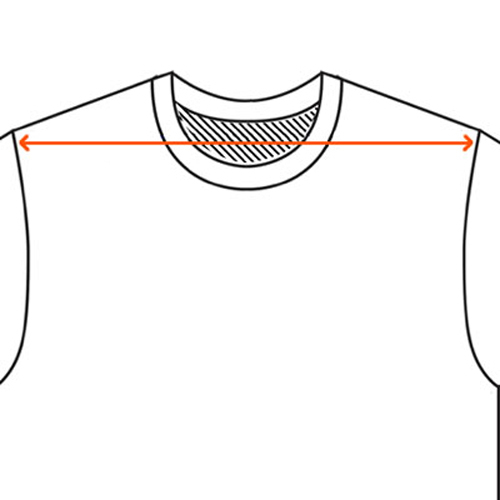
When measuring your shoulders, you want to take your tape in between the two vertical seams opposite of the collar where the sleeves begin. If your shirt doesn’t have the vertical seams, then you may have to guess where the lines might otherwise be. Shoulder seams are usually at the bend near your underarm.
The shoulder-length may be challenging if you are measuring yourself, but you can do so by holding down one end of the tape measurer while stretching it to the opposite side with your other hand. Write down the length to the closest inch on your notepad.
Chest Measurement
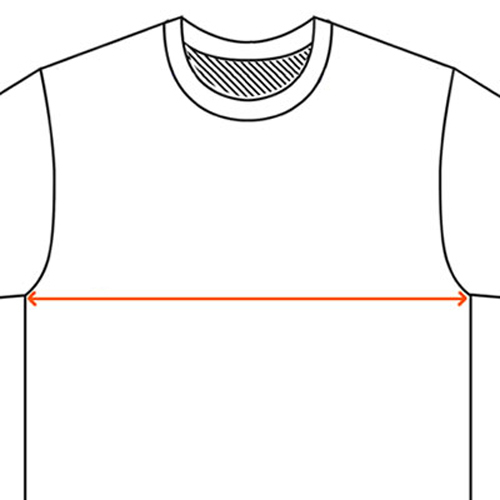
On a t-shirt, your chest measurement will stretch from the bottom of your vertical shoulder seam, across the broadest part of your chest, and to the other side.
If you are wearing the shirt, make sure you keep your relaxed posture without puffing your chest out. The key here is to make sure that the shirt fits you as you move throughout the day. The tape should be loose enough to move around. Write down the number to the closest inch on your notepad.
On a flat surface, place one end of the measuring tape to the end of the shoulder seam and stretch it across the chest to the other shoulder seam.
Quick Tip: Women who are measuring this step should also wear any regular undergarments, like a brassiere, to ensure the exact right measurements for daily wear.
Waist Measurement
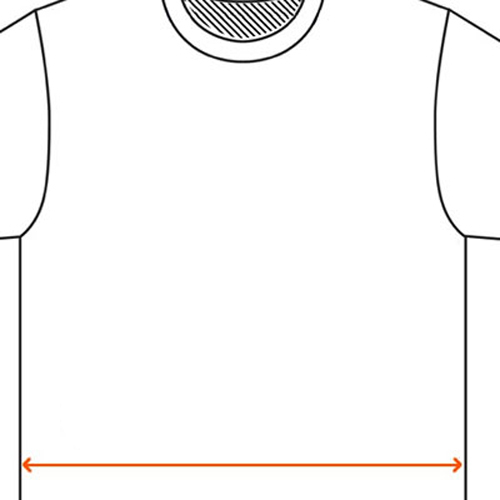
Getting an accurate measurement of the waist is essential, especially if you often find that shirts are too tight or loose around the stomach area.
If you are wearing the shirt, wrap the tape measure around the narrowest part of your waist. Your waist is a few inches above your hips and right below the bottom of your rib cage. Be sure not to suck in your stomach or gut, only standing as you would throughout the day. The tape should be loose enough to move around the body. Write down the number to the closest inch on the notepad.
Hip Measurement
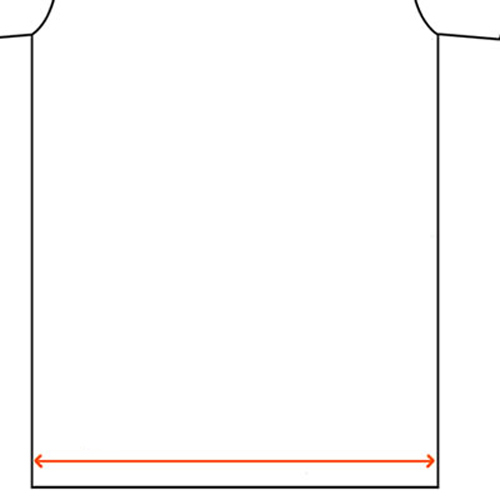
Since most women’s shirts might have different types of bottom hems, many sizing charts will offer the hip measurements. There will be a significant difference in roominess when it comes to shopping for tank tops, straight, curved, or tunic hems. Knowing what fits your body comfortably will help you determine which style hems will fit best when shopping online.
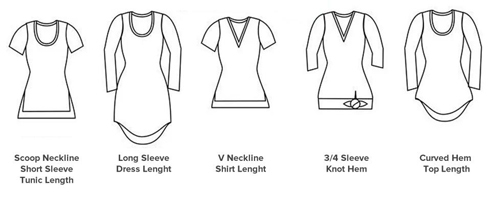
Your hip measurements will be at the very bottom of your shirt, likely an inch or so above the bottom seam. Unless your shirt is unusually long or baggy, try to find the center of your hip bone through your shirt and keep that as the starting point. Then, take your measuring tape and measure around the largest part of your hips, which may include your buttocks. The tape should go where most of your t-shirts fall naturally, usually below the belt-line. Take the number and round it to the closest inch on your notepad.
How to Measure Shirt Length
While t-shirt lengths are generally pretty standard, finding the right size can be frustrating for people who are tall, short, or broad. Knowing the length of your torso and shoulders will be helpful in finding a well-fitted shirt, so you can move comfortably.
Sleeve Length Measurement
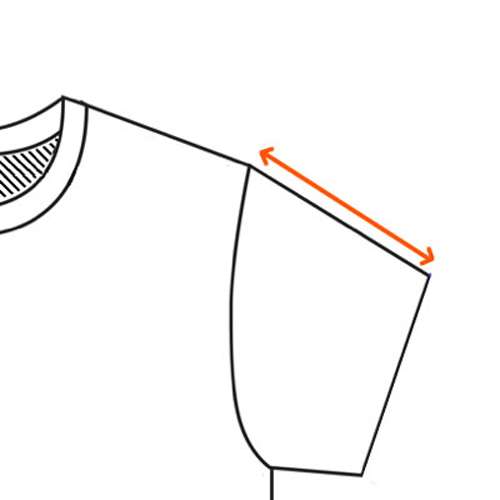
Your shirt’s sleeve length is essentially the entire sleeve, so you’ll start from the same vertical seam point that you measured for your shoulders. So, instead of going across your body, you’ll only be going down the length of your sleeve.
Measuring your sleeve length will be a little tricky if you’re wearing the shirt. However, all you’ll have to do is hold one end of the tape measure from the shoulder seam starting point, and let the other end fall down your arm.
If you’re measuring the shirt on a flat surface, flip it over so that it’s face-down. Then, measure from the neck’s seam to the outer edge of the shoulder seam. Write down the number to the closest inch.
Quick Tip: If you’re of average build and can usually find your shirt sizes at stores, then you can skip this step, although finding your sleeve length is essential for those who have broad or muscular shoulders.
Overall Length Measurement
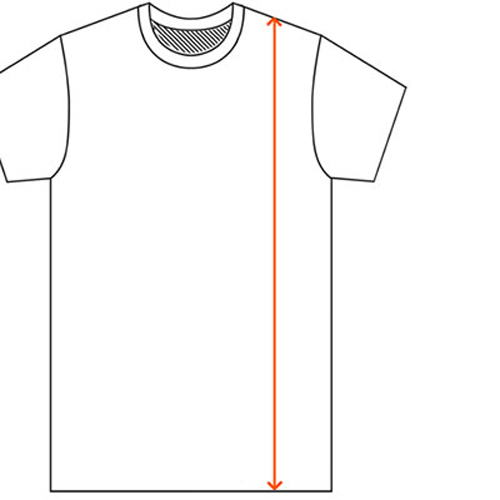
Finding your overall length will help identify the correct size for your figure, especially if you are tall, short, broad, or petite. You’ll start with one end of your measuring tape from the top edge of your neckline seam on the front of your body, and then pull all the way to the bottom of the front hem. Write down the measurement to the closest inch on the notepad.
Quick Tip: Try the shirt on during this step, so you can determine the exact length of your body. You might even notice something you hadn’t before, like finding that your favorite shirt is a little too short, and you could go for an extra inch of length.
Now You Know How to Measure a Shirt
Using the measurements you just took, you can now find the right size closest to yours according to any online sizing chart. If the numbers aren’t exact, it’s always best to round up to the next size. It’s much easier to fit into a slightly looser shirt than one that is too tight!

Now that you know how to measure a shirt, you might be in the market for some new clothes. The good news is that ShirtSpace has a variety of quality apparel—all at wholesale prices.
Even better, you can find an accurate size chart for every item, so you know that what you’re getting will fit you before you even try it on. Find your new favorite t-shirt today!
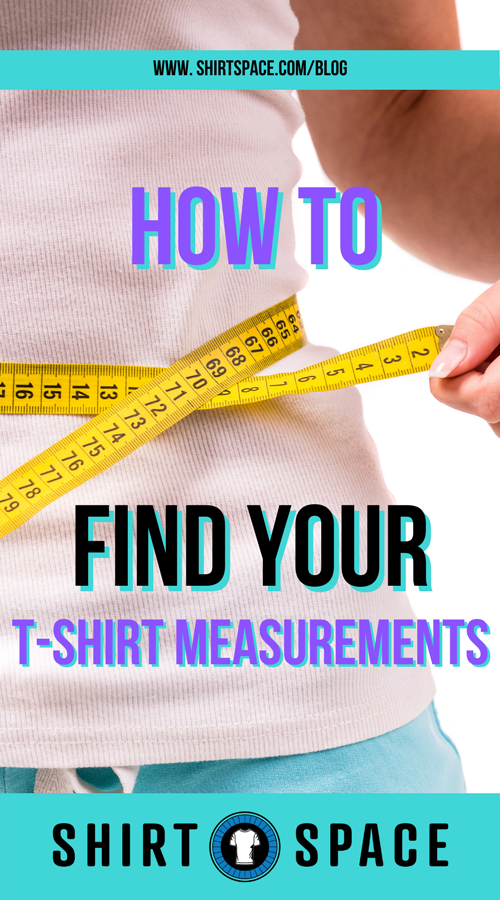


Comments
Bill Jones08/22/2023 05:46 pm
Going for narrowest measurement at waist. Going for chest. All AVOIDING THE BEER BELLY!!! Seems to be setting up for disappointment considering the human body is DESIGNED to place FAT at the STOMACH. NOT the waist (especially narrowest) or chest. Why not take that measurement? Especially for custom shirts where there are NO RETURNS and it YOUR FAULT for the NO FITS.
Reply
ShirtSpace08/24/2023 10:55 pm
Hi, Bill. We completely understand where you are coming from. Bodies come in all shapes and sizes, after all! These recommendations are industry standards. With over 130 brands and 6,000+ products, we try to keep general sizing tips uniform to apply to the majority of our brands. Also, we gladly accept free 45-day returns on all unworn and unwashed items that are not drop shop or extended warehouse. Thank you for reading our blog and your valuable feedback!
Reply
Shammy Peterson01/05/2023 04:07 am
Thanks for pointing out the importance of knowing the length of the torso and shoulders when finding a good fit for the shirt. I don't even know these measurements, so I guess that's why I find it difficult to find a good fit for me. I'll be doing this tonight because I want to buy a new set of shirts for outdoor use soon.
Reply
ShirtSpace07/06/2023 04:57 pm
Hi, Shammy. We are so glad you found value in our blog. Thanks for reading!
Reply
Ninh 10/11/2021 06:18 am
I have the same question: The body width includes: Measurements for hip, waist, chest, shoulder width, but the diagram shows "body" width. How do the first four measurements to be compiled to the ONLY 1 measurement "Body Width" in the chart?
Reply
ShirtSpace08/18/2022 05:13 pm
Hi, Ninh! We feel your pain when it comes to trying to decipher size guides. To answer your question about how to measure for “body width”. When you see that on any size chart, the standard rule of thumb is that width is measured 1” below the armpit from seam to seam, laid flat. We hope this helps you find the perfect t-shirt you have been looking for! If you have any more questions, please feel free to reach out to our Customer Service Team, and I would be happy to assist further.
Reply
R Moore10/02/2023 09:48 pm
I’m confused. A small body width is 18” on the chart … measuring it as you describe equates to 1/2 of circumference, which means a small is 36” chest size! That can’t be correct!
Reply
ShirtSpace10/02/2023 10:52 pm
Hello! The body width would be measured 1" below the armpit from side seam to seam. What you described is correct – the circumference is 36". Bra sizes are often listed as this measurement, in accompaniment with a cup size. So, for instance, 36A is a bra size. This means the person's body width would likely measure at 18", and their body circumference 36".
Reply
Shammy Peterson05/12/2021 12:06 am
I found it helpful when you said that the key to making sure that you will buy clothes that fit your torso is measuring the width of your body. My sister and I are thinking of surprising our mother with new sets of African dresses and shirts. Since this is a surprise, we will definitely find a way to get her measurements discreetly. Thanks for sharing this.
Reply
ShirtSpace10/13/2022 03:50 pm
Hi Shammy! It is so exciting to hear that you are going to surprise your mother with African dresses and shirts! Thank you for reading and taking the time to comment!
Reply
Sherry03/23/2021 02:59 pm
In measuring the length of a t-shirt the article says to start the measurement at the top edge of the neckline seam, but the red line on the picture shows the tape measure at the shoulder seam. I didn't learn the one thing I needed to know.
Reply
ShirtSpace08/18/2022 04:24 pm
Hi, Sherry. You are right - the photo is slightly inaccurate. However, the written instructions within the article are correct, stating to start with one end of your measuring tape from the top edge of your neckline seam on the front of your body, and then pull all the way to the bottom of the front hem. We apologize that the graphic is slightly misleading and will work to resolve this inconsistency. Thank you for bringing it to our attention. If you have any other questions or needs we can further assist with, feel free to reply to this email and we would be happy to help.
Reply
Cheryl J12/17/2025 02:17 pm
Agree please fix this graphic. It is misleading.
Reply
Pamela Bills11/07/2020 04:51 am
This article is EXCELLENT. So glad to have found it! Thanks for putting this out there. 😉
Reply
ShirtSpace10/13/2022 03:49 pm
Hi Pamela! We are so happy to hear how happy our blog made you. Thank you so much for reading and taking the time to comment!
Reply
Wanda09/21/2020 02:17 pm
Thank you. This is the most helpful instruction I've ever read on finding proper shirt measurements.
Reply
ShirtSpace10/13/2022 03:47 pm
Hi Wanda! We are happy to hear you found our blog helpful! Thank you for taking the time to read and comment!
Reply
Mark06/23/2020 08:51 pm
Measurements for hip, waist, chest, shoulder width, but the diagram shows "body" width. How do the first four relate to the last measurement?
Reply
ShirtSpace10/02/2023 10:58 pm
Hi, Mark. Great question! When you see “body width” on any size chart, the standard rule of thumb is that width is measured 1” below the armpit from seam to seam, laid flat. This is a general measurement that is useful for t-shirts. Hip and shoulder measurements will generally be wider than your “body width”, depending on your build. The chest measurement is similar to body width, but a little below. For instance, body width is measure where a woman would measure for her bra size. This would be right below her breasts. The chest size would measure the largest part of the chest, and therefor would include the breasts in the measurement. We hope this gives you more insight into the differences between these different body measurements.
Reply
Leave a Comment
We take your privacy seriously and will not share or publish your email address.
This site is protected by reCAPTCHA and the Google Privacy Policy and Terms of Service apply.